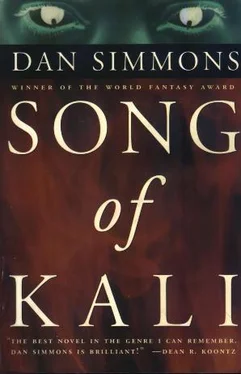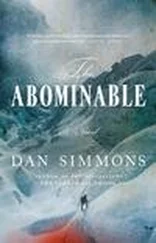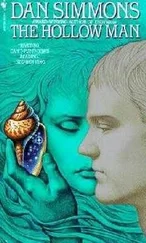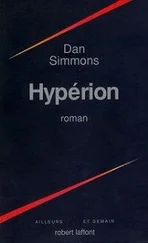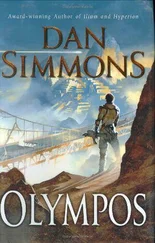"Even today the Calcutta police will not enter major sections of the city. Last year they had tried daytime patrols in twos and threes, but after the goondas returned a few of these patrols in portions of seven and eight, the Commissioner refused to let his men go into those areas without the protection of soldiers. Our Indian Army announced that it had better things to do.
"Sanjay admitted that he had become associated with the Calcutta goondas through his pharmaceutical connections. But, he said, by the end of his first year at University, he had widened his role to include collection of protection money from many of his classmates and a runner's job as liaison between the goondas and the Beggarmasters' Union on the north side of the city. Neither of these tasks paid Sanjay very much, but they gave him considerable status. It was Sanjay who carried the order to the Union to temporarily reduce the number of child kidnappings when the Times of India began one of its seasonal and short-lived editorial outrages at the practice. Later, when the Times turned its moralizing eye to dowry murders, it was Sanjay who relayed permission to the Beggarmasters to replenish their depleted stock by increasing the kidnappings and mutilations.
"It was through the Beggarmasters that Sanjay received his chance to join the Kapalikas. The Kapalika Society was older than the Goonda Brotherhood, older even than the city.
"They worship Kali, of course. For many years they worshiped openly at the Kalighat Temple, but their custom of sacrificing a boy child each Friday of the month caused the British to ban the Society in 1831. They went underground and thrived. The nationalist struggle through the last century brought many to seek to join them. But their initiation price was high — as Sanjay and I were soon to learn.
"For months, Sanjay had tried to make contact with them. For months he had been put off. Then, in the autumn of last year, they offered him his chance. Sanjay and I were fast friends by then. We had taken the Brotherhood Oath together and I had done my small share by running a few messages to various people and once I made a collection run when Sanjay was ill.
"It surprised me when Sanjay offered to let me join the Kapalikas with him. It surprised and frightened me. My village had a temple to Durga, the Goddess Mother, so even so fierce an aspect and incarnation of her as Kali was familiar to me. Yet I hesitated. Durga was maternal and Kali was reputed to be wanton. Durga was modest in her representations while Kali was naked — not nude, but brazenly naked — wearing only the darkness as her cloak. The darkness and a necklace of human skulls. To worship Kali beyond her holiday was to follow the Vamachara — the perverse left-handed Tantra. I remember once as a child an older cousin was showing around a printed card showing a woman, a goddess, in obscene coitus with two men. My uncle found us looking at it, took the card, and struck my cousin in the face. The next day an old Brahmin was brought in to lecture us on the danger of such Tantric nonsense. He called it 'the error of the five M's' — madya , mamsa , matsya , mudra , maithun . These, of course, were the Pancha Makaras which the Kapalikas might well demand — alcohol, meat, fish, hand gestures, and coitus. To be truthful, coitus was much on my mind those days, but to first experience it as part of a worship service was a truly frightening thought.
"But I owed Sanjay much. Indeed, I began to realize that I might never be able to pay the debt I owed him. So I accompanied him on his first meeting with the Kapalikas.
"They met us in the evening in the empty marketplace near the Kalighat. I do not know what I expected — my image of Kapalikas grew out of the stories told to frighten unruly children — but the two men who waited there for us fit none of my imaginings and apprehensions. They were dressed like businessmen — one even carried a briefcase — and both were soft-spoken, refined in manner and dress, and courteous to both of us despite class and caste differences.
"The ceremonies in progress were most dignified. It was the day of the new moon in celebration of Durga, and the head of an ox was on the iron spike before Kali's idol. Blood still dripped into the marble basin beneath it.
"As someone who had worshiped Durga faithfully since infancy, I had no trouble joining in the Kali/Durga litany. The few changes were easily learned, although several times I mistakenly invoked Parvati/Durga rather than Kali/Durga. The two gentlemen smiled. Only one passage was so substantially different that I had to learn it anew:
The world is pain,
O terrible wife of Siva
You are chewing the flesh;
O terrible wife of Siva,
Your tongue is drinking the blood,
O dark Mother! O unclad Mother.
O beloved of Siva
The world is pain.
"Then large clay effigies were carried through the Kalighat in procession. Each was sprinkled with the blood of the sacrifice. Some were statues of Kali in her aspect of Chandi, The Terrible One; or as Chinnamasta, the 'she who is beheaded' of the ten Mahavidyas when Kali decapitated herself so as to drink of her own blood.
"We followed the procession outside and down to the banks of the Hooghly River, through which, of course, the waters of the Holy Ganges flow. There the idols were cast into the water in the sure faith that they would rise again. We chanted with the crowd:
Kali, Kali balo bhai
Kali bai aré gaté nai
O brethren take the name of Kali
There is no refuge except in her.
"I was moved to tears. The ceremony was so much more grand and beautiful than the simple village offerings in Anguda. The two gentlemen approved. So, evidently, did the Kalighat jagrata , for we were invited to a true meeting of the Kapalikas on the first day of next month's full moon."
Krishna paused in his translation. His voice was growing slightly hoarse. "Do you have any questions as of yet, Mr. Luczak?"
"No," I said. "Go on."
"Sanjay was very agitated all that month. I realized that he did not have the religious upbringing which I had been so fortunate to receive. Like all members of the Communist Party India, Sanjay had to deal with political beliefs which were at war with his deeper heritage as a Hindu. You must understand that to us religion is no more an abstract 'belief requiring an 'act of faith' than is the process of breathing. Indeed, it would be easier to will one's heart to stop beating than to will away one's perspective as a Hindu. To be a Hindu, especially in Bengal, is to accept all things as aspects of divinity and never to artificially separate the sacred from the profane. Sanjay shared this knowledge, but the thin layer of Western thought which had been grafted over his Indian soul refused to accept it.
"Once during that month, I asked him why he had bothered to seek membership with the Kapalikas if he could not truly worship the goddess. He grew angry at me then, and called me several names. He even threatened to raise my rent or call due his notes. Then, perhaps remembering our Brotherhood Oath and seeing the sorrow written on my face, he apologized.
"'Power,' he said, 'Power is the reason I have sought this, Jayaprakesh. For some time I have know that the Kapalikas hold power far out of proportion to their numbers. The goondas fear nothing . . . nothing but the Kapalikas. The thugees , as stupid and violent as they are, will not oppose someone known to be a Kapalika. The common people hate the Kapalikas or pretend the society no longer exists, but it is a hatred born of envy. They fear the very name Kapalika .'
Читать дальше
